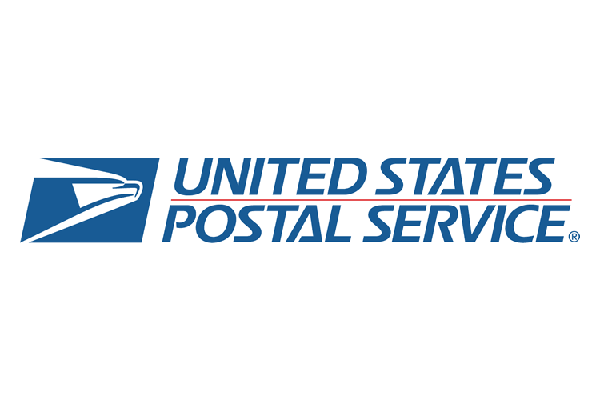USPS sees revenue gain but net losses remain intact in fiscal second quarter earnings
At $17.5 billion, USPS revenue headed up $235 million, or 1.4%, compared to the fiscal second quarter of 2017, but it incurred a net loss of $1.3 billion for the quarter compared to a net loss of $562 million a year ago

Fiscal second quarter earnings for the United States Postal Service (USPS) brought something that was welcome and has often been missing in previous earnings announcements, an increase in total revenue.
At $17.5 billion, USPS revenue headed up $235 million, or 1.4%, compared to the fiscal second quarter of 2017.
USPS cited another strong quarter for its Shipping and Packages group, which saw revenue rise by $445 million, or 9.5%, to $5.152 billion, along with package volume up 69 million pieces, or 5%, to 1.458 billion.
Parcel Services volume was up 5.4% to 732,000, and Package Services volume was up 2.6% to 156,000. USPS said in its Form 10-Q statement that Parcel Services volume gains were paced largely by the continuing growth of e-commerce, with the caveat that this subcategory is mainly a “last-mile” service that “bypasses much of our infrastructure and therefore is one of our lowest-priced package services, and as a result, produces a lower yield per piece when compared to many of our other services.”
USPS First-Class and Marketing revenue dropped by a combined $118 million, with mail volumes down 2.1%, or 700 million pieces, annually.
Even though First-Class and Marketing comprises a significant amount of USPS revenue, although the USPS Form 10-Q noted , even though there are intact long-term trends away from hard-copy communication to electronic media, which has resulted in significant First-Class Mail declines over the last decade. Marketing Mail, it said, has been relatively steady over the same period, even though its volume has fallen at a steeper rate beginning in 2017 and remaining in the same pattern to the present day.
While revenue was in the black for the USPS, it was not all positive news, with the organization saying:
- its quarterly controllable loss was $656 million, which was significantly steeper than the $12 million in controllable income a year ago, with the change in controllable income due to a $236 million increase in the controllable portion of the normal cost of retiree health benefits due to changes in actuarial assumptions, a $364 million increase in compensation expenses due to additional hours incurred to support the labor-intensive package business as well as contractual wage adjustments, and transportation expenses rising by $155 million due to highway contract rate inflation as well as higher fuel costs;
- a net loss of $1.3 billion for the quarter compared to a net loss of $562 million a year ago;
- total operating expenses up $1 billion, or 5.7%, to $18.8 billion; and
- unfunded retirement and retiree health benefits up a cumulative $766 million
“Despite growth in our package business, our financial results reflect systemic trends in the marketplace and the effects of an inflexible, legislatively mandated business model that limits our ability to generate sufficient revenue and imposes costs upon us that we cannot afford,” said Postmaster General and CEO Megan J Brennan in a statement. “America needs a financially strong Postal Service that can invest in its future and can continue to fulfill the needs of American businesses and consumers. With continued aggressive management and greater legal authority to respond to changes in our marketplace and to control our costs, the Postal Service can return to financial sustainability.”
Jerry Hempstead, president of Hempstead Consulting, said that even though there is strong growth in the USPS’s Shipping and Packages group, it is not enough to overcome the quarterly losses USPS is incurring.
“When the current Parcel strategy was fleshed out there, were very liberal assumptions about cost allocation to the product,” he said. First-Class mail was doing the heavy lifting, so it was burdened with more of the institutional costs (like letter carriers, delivery vehicles, post offices and so on). The dynamics have shifted dramatically over the last decade with the extraordinary decline of First-Class and the incredible growth of parcel. The USPS has said that parcel is far more labor intensive than First-Class to handle. What we are to read between the lines is that ‘yes, parcels are growing in transactions and revenue, but the revenue may not be covering the incremental costs associated with this particular product offering. The President has also commented on this aspect.”
Assessing what needs to happen going forward, Hempstead said that when the cost allocation process is debated between the USPS and the Postal Regulatory Commission, there might be a need to update the prices of the postal products.

Article Topics
Parcel Express News & Resources
LM Podcast Series: Assessing the freight transportation and logistics markets with Tom Nightingale, AFS Logistics TD Cowen/AFS Freight presents mixed readings for parcel, LTL, and truckload revenues and rates Solving the last-mile delivery issue in New York City Parcel experts examine the UPS-United States Postal Service air cargo relationship amid parcel landscape UPS is set to take over USPS air cargo contract from FedEx FedEx fiscal third quarter earnings see gains amid ongoing volume declines Will recent talks between FedEx and Amazon lead to a reunion? More Parcel ExpressLatest in Logistics
LM Podcast Series: Assessing the freight transportation and logistics markets with Tom Nightingale, AFS Logistics Investor expectations continue to influence supply chain decision-making The Next Big Steps in Supply Chain Digitalization Warehouse/DC Automation & Technology: Time to gain a competitive advantage The Ultimate WMS Checklist: Find the Perfect Fit Under-21 driver pilot program a bust with fleets as FMCSA seeks changes Diesel back over $4 a gallon; Mideast tensions, other worries cited More LogisticsAbout the Author
Subscribe to Logistics Management Magazine

Find out what the world's most innovative companies are doing to improve productivity in their plants and distribution centers.
Start your FREE subscription today.
April 2023 Logistics Management

Latest Resources














